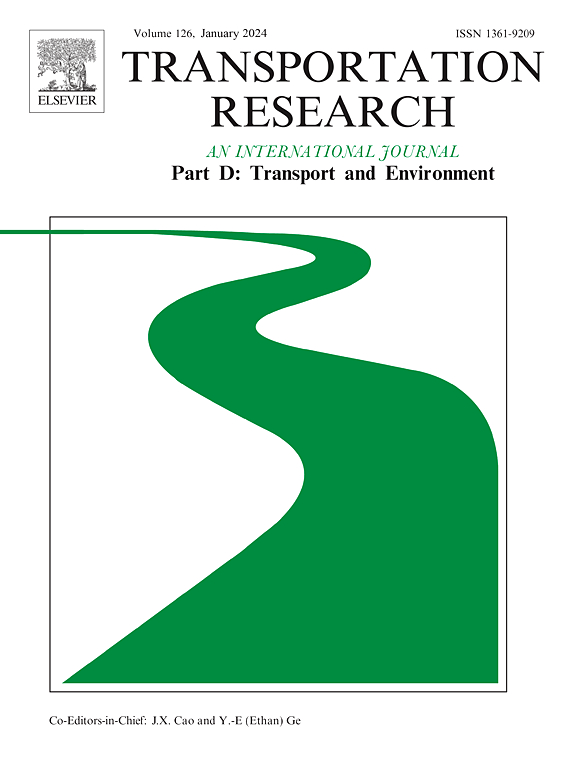Initial investigations of lead chromate road paint in the Midwest, United States
IF 7.7
1区 工程技术
Q1 ENVIRONMENTAL STUDIES
Transportation Research Part D-transport and Environment
Pub Date : 2025-09-27
DOI:10.1016/j.trd.2025.105013
引用次数: 0
Abstract
Lead chromate (PbCrO4) lacks systematic monitoring data in road paint in the U.S.A. A survey of road paint across Ohio, Indiana, Illinois, Kentucky, and West Virginia was conducted to assess if PbCrO4 exists in road paint in the modern environment. Scanning electron microscopy − energy dispersive spectroscopy (SEM-EDS) indicates Pb-Cr compounds occur in 30 samples among all states. Pb-Cr-bearing particles typically appear as nanometer to micrometer scale particles or aggregates. When present, dissolution textures in sampled road paints are indicative of potential metal release. XRD analysis on five representative paint samples confirms the presence of PbCrO4. Results indicate PbCrO4 is a legacy pollutant in YRP in some regions of the Midwest U.S. PbCrO4 may be transported and systematic geographic studies which integrate materials science research are warranted.
美国中西部地区铬酸铅路面涂料的初步调查
美国道路涂料中铬酸铅(PbCrO4)缺乏系统的监测数据。对俄亥俄州、印第安纳州、伊利诺伊州、肯塔基州和西弗吉尼亚州的道路涂料进行了一项调查,以评估现代环境中道路涂料中是否存在PbCrO4。扫描电镜-能谱分析(SEM-EDS)结果表明,30个样品中均存在Pb-Cr化合物。含铅铬颗粒通常表现为纳米至微米尺度的颗粒或聚集体。当存在时,溶解纹理在采样的道路涂料是潜在的金属释放的指示。5个代表性涂料样品的XRD分析证实了PbCrO4的存在。结果表明,在美国中西部部分地区,PbCrO4是YRP中的遗留污染物,PbCrO4可能会被输送到YRP中,有必要进行系统的地理研究,并结合材料科学研究。
本文章由计算机程序翻译,如有差异,请以英文原文为准。
求助全文
约1分钟内获得全文
求助全文
来源期刊
CiteScore
14.40
自引率
9.20%
发文量
314
审稿时长
39 days
期刊介绍:
Transportation Research Part D: Transport and Environment focuses on original research exploring the environmental impacts of transportation, policy responses to these impacts, and their implications for transportation system design, planning, and management. The journal comprehensively covers the interaction between transportation and the environment, ranging from local effects on specific geographical areas to global implications such as natural resource depletion and atmospheric pollution.
We welcome research papers across all transportation modes, including maritime, air, and land transportation, assessing their environmental impacts broadly. Papers addressing both mobile aspects and transportation infrastructure are considered. The journal prioritizes empirical findings and policy responses of regulatory, planning, technical, or fiscal nature. Articles are policy-driven, accessible, and applicable to readers from diverse disciplines, emphasizing relevance and practicality. We encourage interdisciplinary submissions and welcome contributions from economically developing and advanced countries alike, reflecting our international orientation.

 求助内容:
求助内容: 应助结果提醒方式:
应助结果提醒方式:


